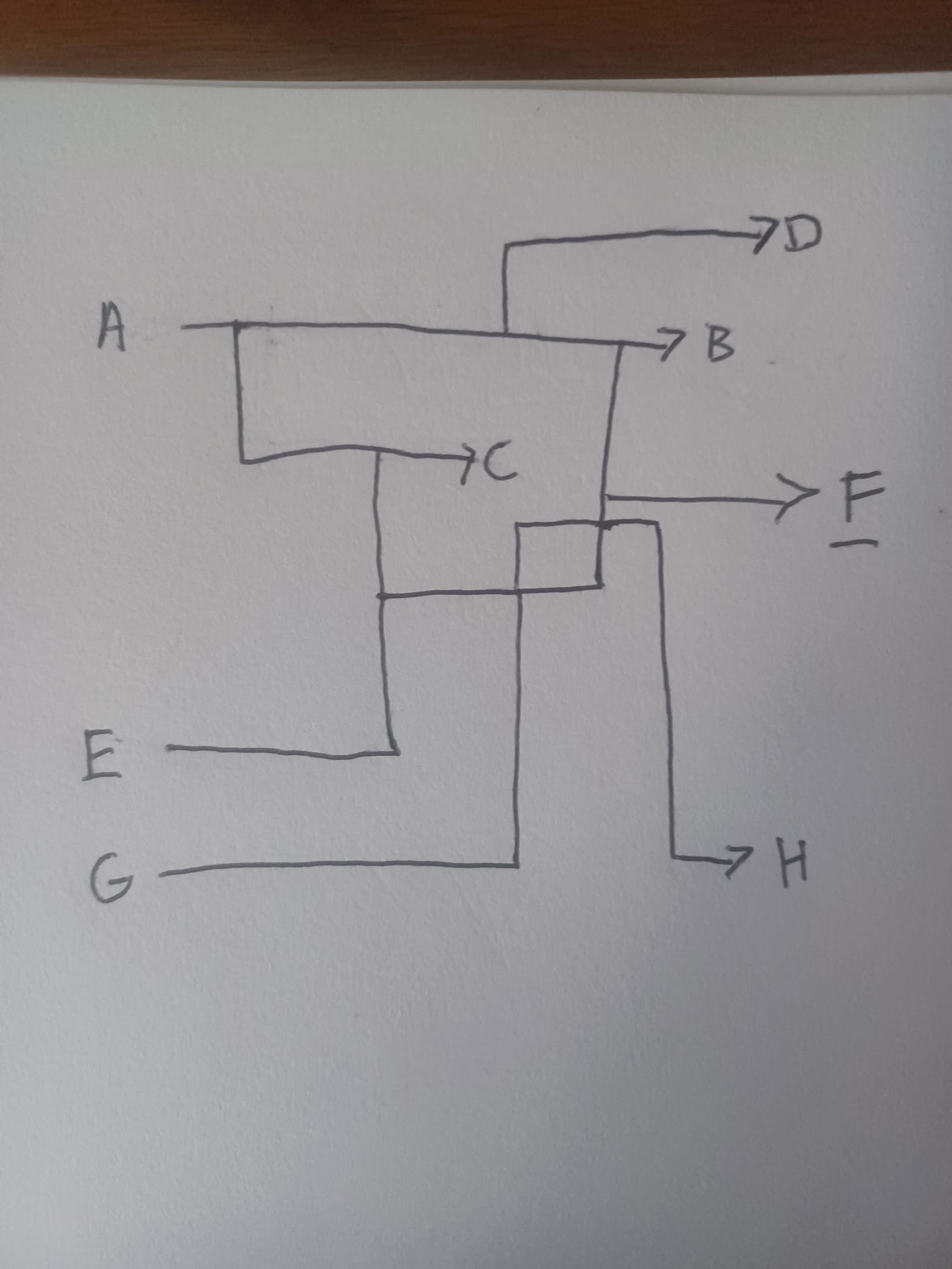Let’s use this image to explain a few things about outcomes in life.
If you follow A to B, you will see what many people expect out of life, and anything that deviates from that becomes sensory information they blot out. For instance, a ‘worker mindset’ leads to someone saying “I worked my 40 years for a company I deserve a happy retirement with a gold watch and a beer.” or “I’m a good songwriter so eventually everyone will love my songs and I’ll be rich and famous.”
When people realize that A—C outcomes happen, such as dying early, ODing on drugs, becoming disabled due to a car accident, etc. then anxieties and the ‘real world’ come into focus; in which people die and bad things happen for no apparent reason. Usually, this means an A—D outcome, wherein everything somewhat ‘works out’, but not how was planned, usually driven by adaptation to change, power shifts and things beyond one’s control. Generally speaking, people try to advantage their children so that their children will go as close to as from A to B as possible. Life never works exactly that way, but one hopes it does for innocent children and wide eyed, intelligent promising individuals.
Some people start out at E. This is usually because their parents held low prestige or low incomes at the start of their life. They can achieve B outcomes, but often have to work twice as hard. They more often have C or F outcomes, with F being a wonky, distorted version of what they grew up with usually heavily affected by culture and an anti-structural attitude based on not trusting the system or thinking it’s against them, as per their initial starting place. The shortest distance it to a C outcome, that of accident, death, dire poverty, etc. because that pathway is the most clear for E starting people, whereas it is considered tragedy for A starters. E starters barely ever end up with D outcomes because they have no buffer, no padding, to protect them. For instance, not having health or car insurance makes you vulnerable to ‘one-thing-goes-wrong-and-it’s-over syndrome.
Finally, G starters almost always end up with H outcomes despite perhaps intersecting with other pathways. This would include someone born outside of societies perception of normal- a blind or deaf person, or conjoined twins, or people with dwarfism or extreme disfigurement. Their H outcomes aren’t really reserved for anyone else as they are usually state or family dependent their entire lives.
Are better people born at A outcomes? Surely not. However, these cycles are quantifiable. When an A starter and E starter get together, usually the E starter benefits, and their habits, deficits, and desires derail an A starter, ending poorly for both.
A and E starters however, rarely couple off or become business partners with G starters, indicating that there is in fact, prejudice, despite all of the nomenclature that would attempt to indicate otherwise.


